Gallery in the skies: in conversation with Chinese ink painter Chan Keng Tin
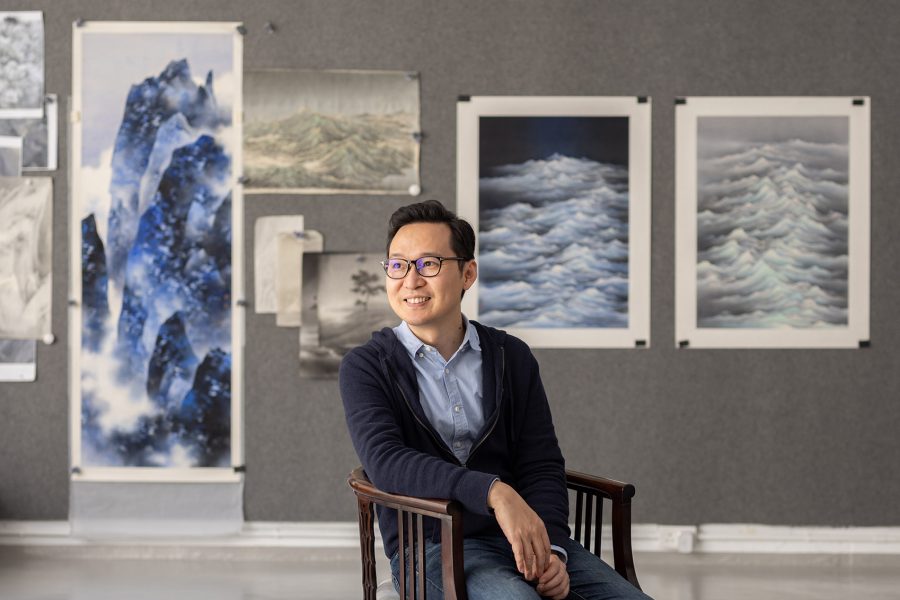
Chinese ink painter Chan Keng Tin's Formless series may remind you of the view from a plane window – as you fly high above the earth, the sea of clouds, mountain valleys and expansive ocean all blend into one. Chan’s ethereal landscapes are both familiar and surreal.
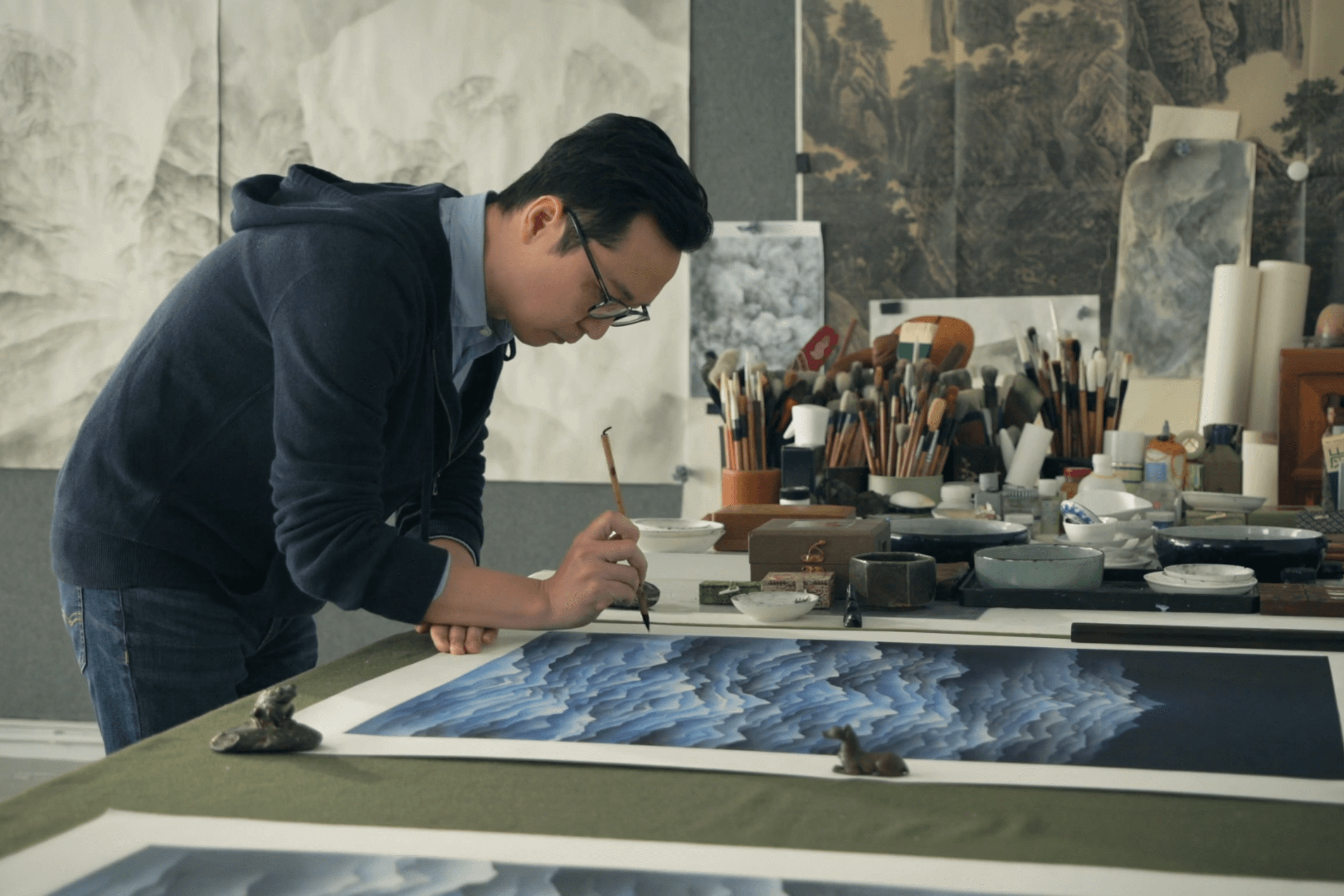
Inside his light-filled studio in Kennedy Town, Chan applies the final touches to “Formless No.8” and “Formless No.9” – two pieces created exclusively for Gallery in the skies, a curated collection of artworks to be showcased in the new Business cabins of our Boeing 777-300ER aircraft. An earlier work from 2021, titled “Formless No.6”, has also been acquired for this project; the original hangs in our reopened lounge, The Bridge, at Hong Kong International Airport. Chan’s work was a natural fit for the collection, given the inspiration behind Formless. "I am honoured that Cathay has chosen this series, which, in fact, originated from my experiences on planes during travels," he says.
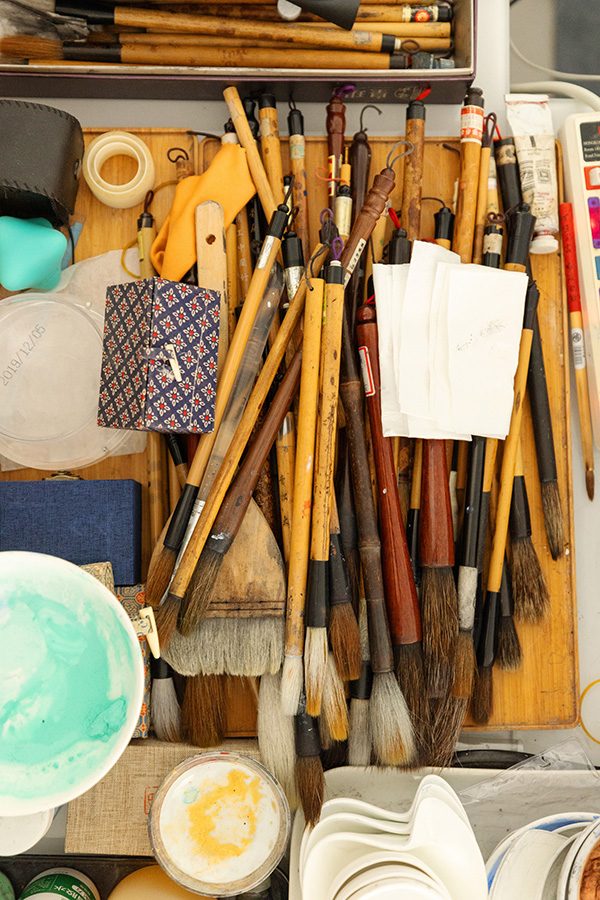
Credit: Mike Pickles
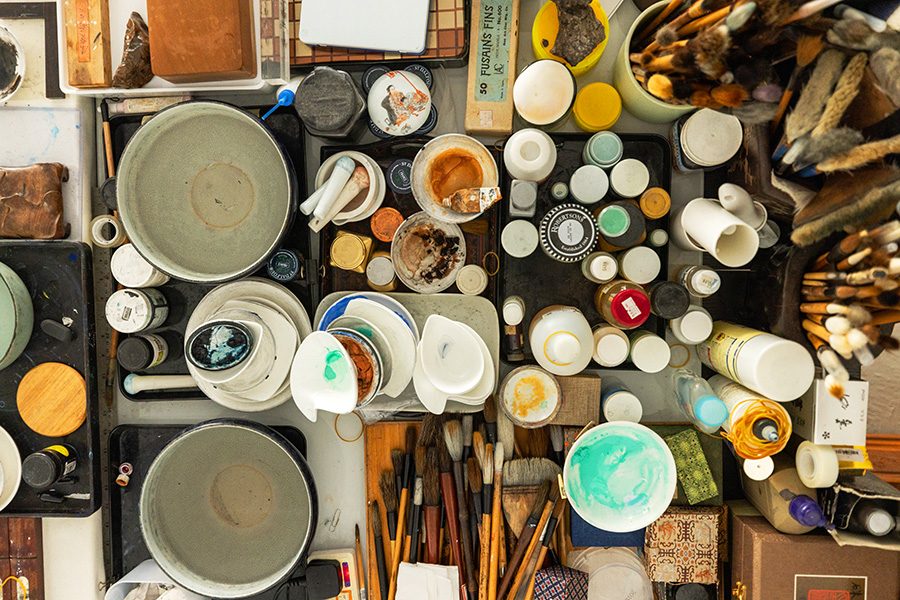
Credit: Mike Pickles
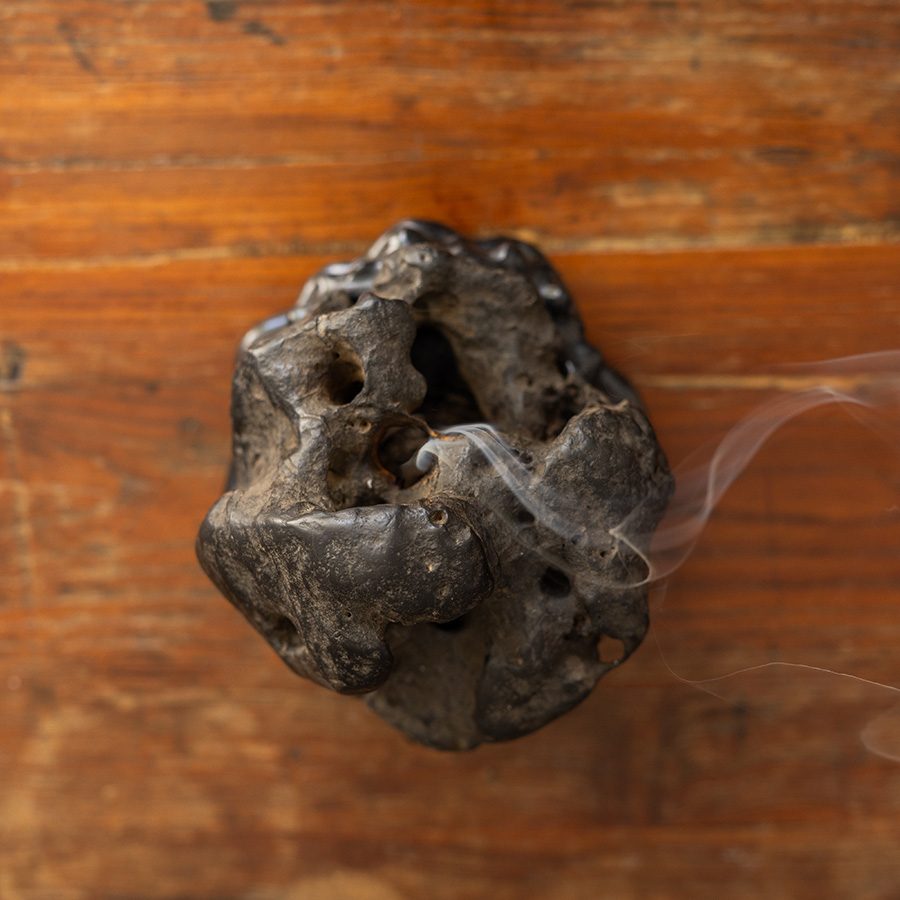
Credit: Mike Pickles
Born in Zhejiang and raised in Hong Kong, Chan’s creative path began with his family – and with an artistic style routed in traditional methods. “I liked painting, probably influenced by my parents. We had art materials and tools at home, so I loved painting from a young age, and it gradually became a hobby,” says Chan. “After graduating from university, I created traditional ink paintings until my research days at the National Academy of Painting in Beijing, when I realised my work wasn’t distinctive enough, and I began to look for a change in style.”
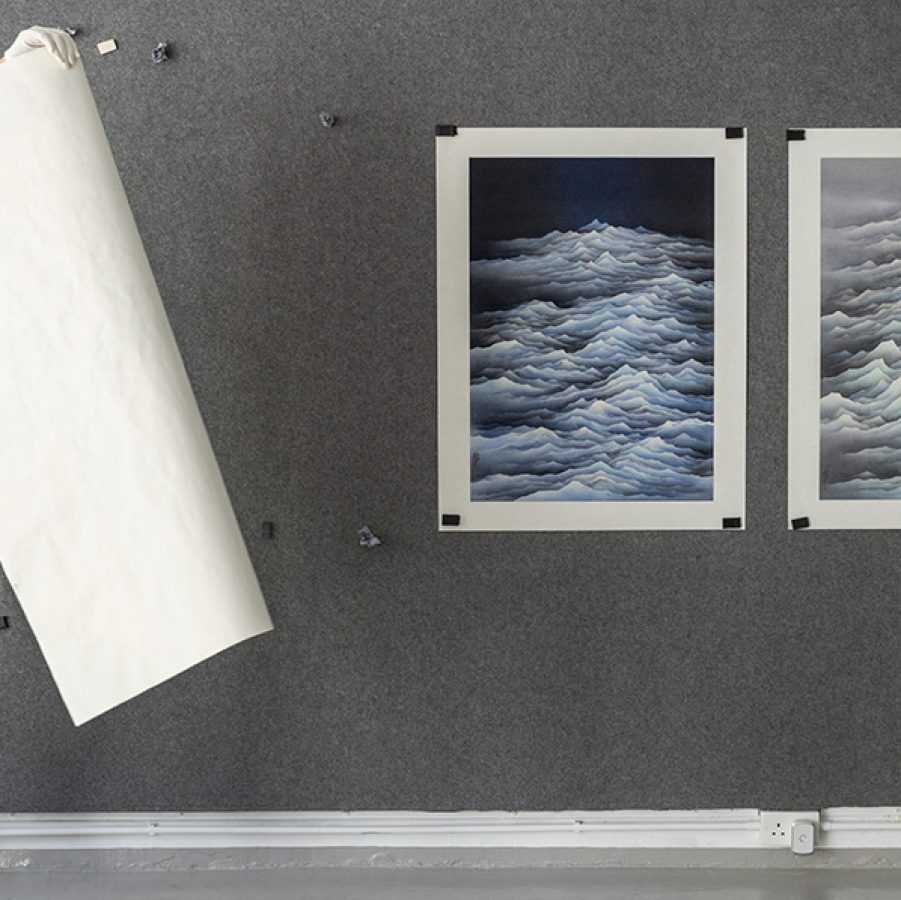
Credit: Mike Pickles
The Formless series marks an important phase in Chan’s transition from traditional to contemporary art. “During the pandemic, many activities were halted, giving me a space to create without the pressure of preparing for exhibitions. So I started several new series, one of which was Formless,” he says.
While Chan’s studio overlooks mountains and seas, the inspiration for Formless comes from his experiences high above the ground. “Looking out the plane window and seeing a vast expanse of mountains and seas, one may be confused whether they’re seeing mountains or seas, clouds or mountains. This state of confusion between the three creates a sense of vastness,” says Chan. “In Chinese, there are phrases like ‘mountains resemble seas’ and ‘sea of clouds’, so I wanted to integrate these phrases to create an image between heaven and earth.”
Within this space, Chan explores the concept of “formlessness”, a fundamental aspect of his work. “In Buddhism, 'form' refers to all phenomena like material, psychological, physiological and natural. Since nothing in the world is permanent, 'formless' means not clinging to phenomena,” he says. “Everything seen on a journey, in the sky, is fleeting."
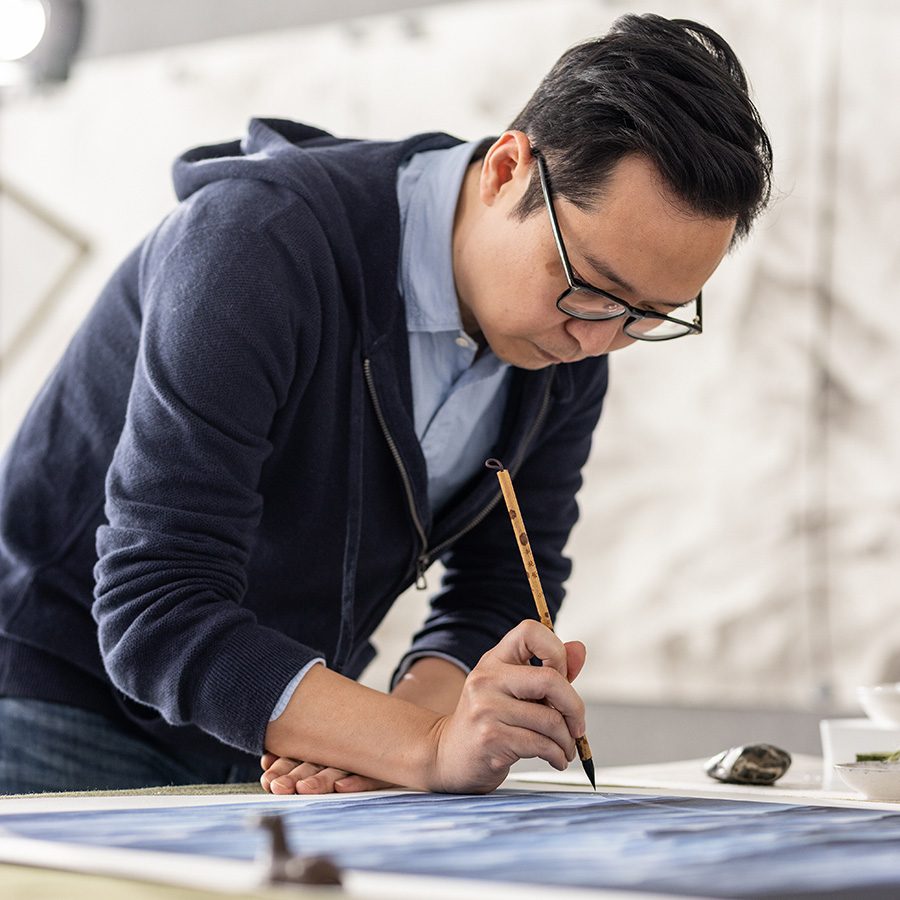
Credit: Mike Pickles
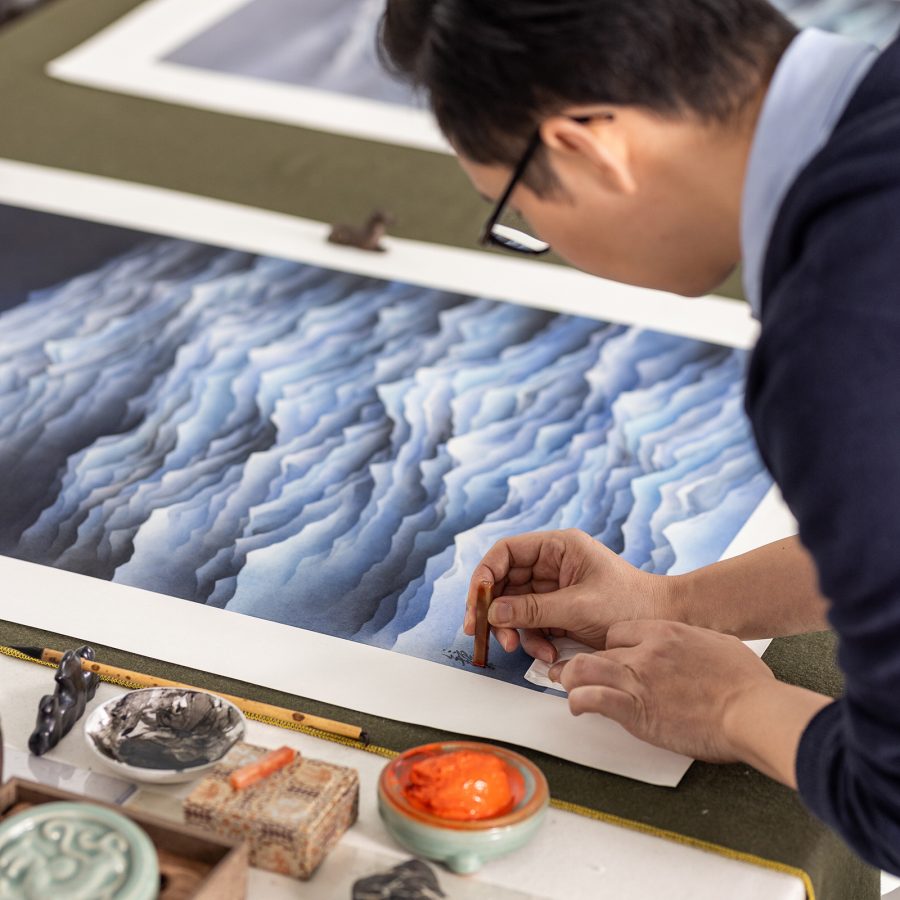
Credit: Mike Pickles
It is there that the distinction between natural structures is deliberately blurred. “I didn't want to describe it too realistically, or turn the work into a real depiction of any particular mountain or sea. Hence, I chose to handle the relationship between clouds, mountains and seas in a flat, conceptual, abstract manner, creating an atmosphere of being amidst the vast wilderness,” says Chan. Though influenced by the great expanse of nature, Chan’s work holds a deeper significance. “Ultimately, art creation is about the artist expressing their heart, what I call 'the image of the heart'.” After long periods of observation, Chan creates his ethereal landscapes – the formless space between heaven and earth – to reflect what lies in his own heart.
Chan's world, though formless, is filled with colour: blues, greens and oranges. "Blue has been a long-term colour in my creations, naturally associated with mountains and seas visually. I also used celadon, which comes from the concept of blue-green landscape paintings, and orange was a more interesting attempt." The blue, green and black inks used to create the landscapes of “Formless No.8” and “Formless No.9” have a calming effect.
As an artist who grew up in the city and chose nature as his subject matter, his understanding of mountains and water, artificial and natural, traditional and contemporary, has evolved over different stages. "I personally love traditional landscape paintings, and my creations started from tradition, that is, the sentiments of ancient people. However, we have no real connection with them – they lived amidst nature, closely resonating with the mountains and rivers, and our modern connection with nature is merely through travelling and hiking, just memories of trips,” he says. “Growing up in Hong Kong and then moving to Taipei and Beijing, I have always been living in big cities. If I continued to create traditional landscapes, it would feel a bit like building castles in the air, hence the shift to my current creative mode."
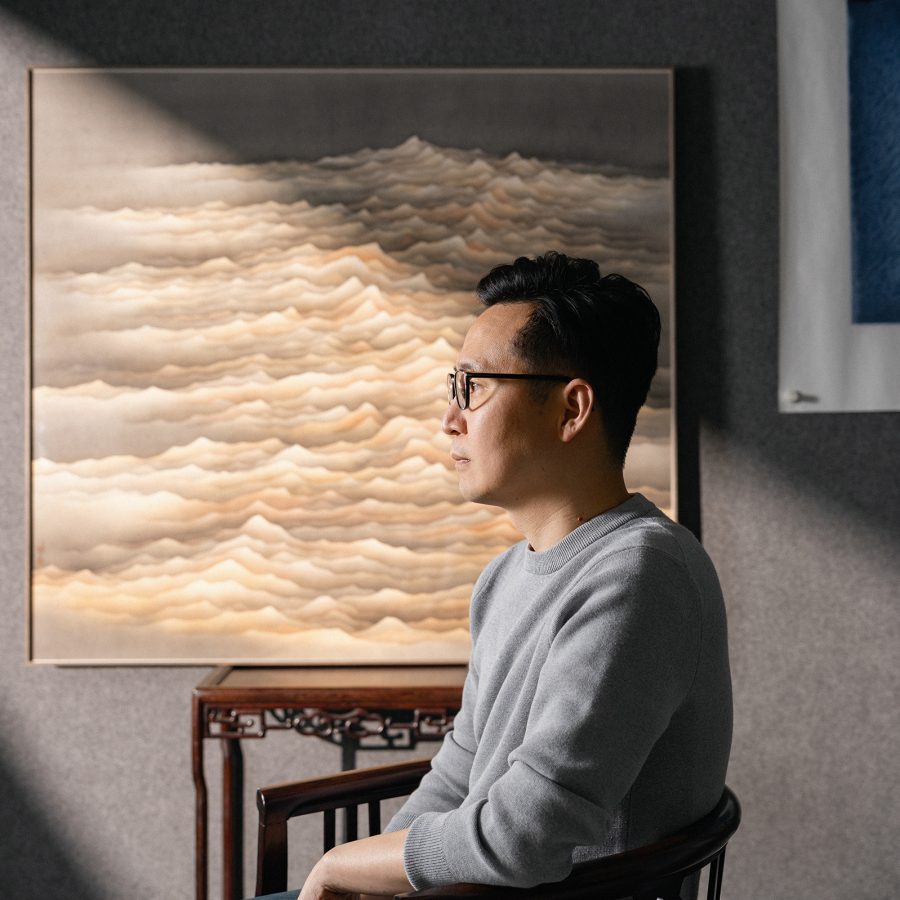
Credit: Elvis Chung
Just as our ancestors lived amidst mountains, rivers and oceans; modern people seek them out on their journeys. “Today, travelling is common, but a transition takes place between journeys, often accompanied by departures and returns. During this period, we often spend this time inside the plane cabin with a blank state of mind. Besides watching movies and looking at the scenery, now with the addition of artworks, we can enjoy this leg of our journey in an atmosphere surrounded by art, perhaps with more anticipation for the next journey.”
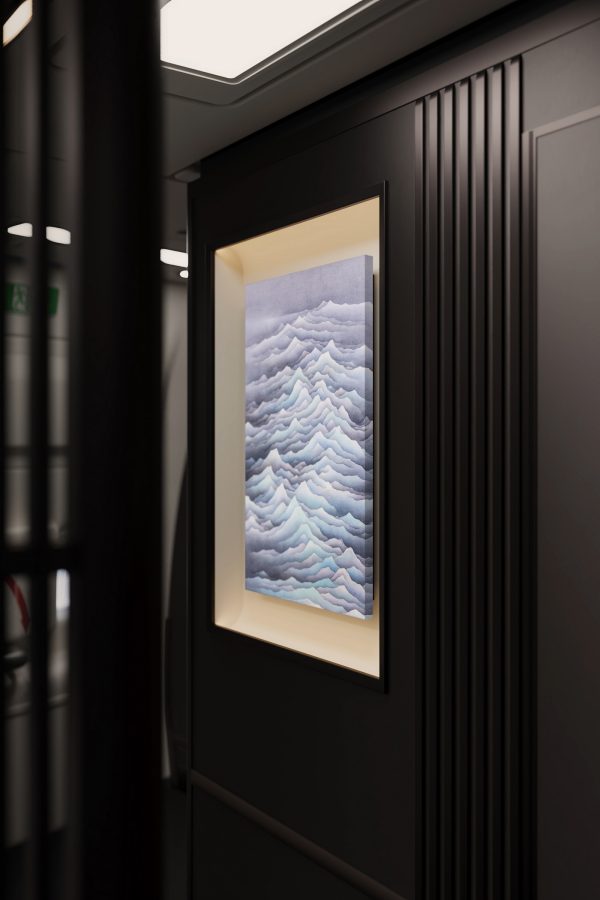
Credit: Elvis Chung
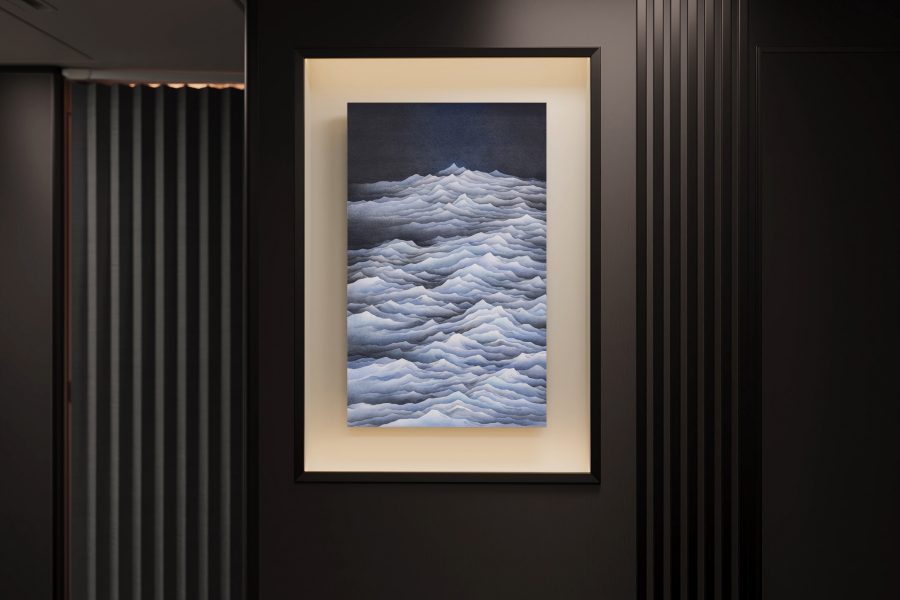
Credit: Elvis Chung
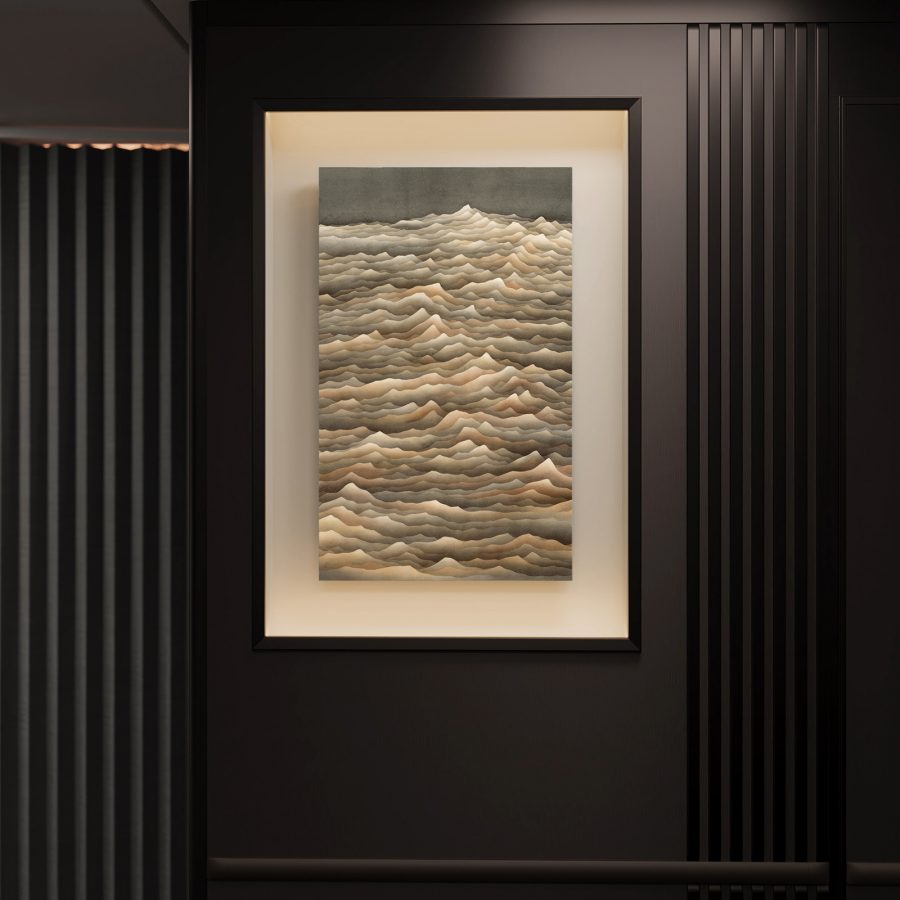
Credit: Elvis Chung
On your next flight, as you gaze out at the mountains, seas and clouds outside the window, take a look at Chan’s dreamlike landscape inside the Business cabin. There, you’ll also see an image of his own heart.
This story was originally published in April 2024 and updated in August 2025.
More inspiration
- China – the Chinese Mainland, Hong Kong SAR, Macao SAR and Taiwan Region
- Hong Kong SAR - English
- Chinese Mainland (China) - English
- Taiwan, China - English
- 香港特別行政區 - 繁體中文
- 中国內地 - 简体中文
- 中國台灣 - 繁體中文
- Africa
- South Africa - English
- Asia
- Bangladesh - English
- Korea - English
- Singapore - English
- Cambodia - English
- 한국 - 한국어
- Sri Lanka - English
- India - English
- Malaysia - English
- Thailand - English
- Indonesia - English
- Maldives - English
- ประเทศไทย - ภาษาไทย
- Indonesia - Bahasa Indonesia
- Myanmar - English
- Vietnam - English
- Japan - English
- Nepal - English
- Việt Nam - tiếng Việt
- 日本 - 日本語
- Philippines - English
- Australasia
- Australia - English
- New Zealand - English